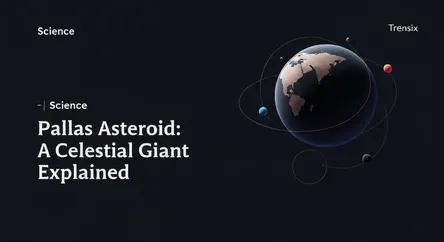Science
Pallas Asteroid: A Celestial Giant Explained

Discover Pallas, the third-largest object in the asteroid belt. Learn why this unique protoplanet is a key target for scientific study.
What is it?
Pallas, officially designated 2 Pallas, is the third-largest asteroid in the main asteroid belt, orbiting between Mars and Jupiter. Discovered in 1802, it accounts for about 7% of the belt's total mass. Pallas is considered a remnant protoplanet, a building block of a planet that never fully formed. Its surface is heavily cratered, suggesting a violent history of collisions. Unlike most large asteroids that orbit on a relatively flat plane with the planets, Pallas has a highly inclined and eccentric orbit, making it a challenging target for spacecraft to visit.
Why is it trending?
Interest in asteroids is surging due to successful missions like NASA's DART and OSIRIS-REx. While not the target of a dedicated mission yet, Pallas is gaining attention as a prime candidate for future exploration. Recent studies using advanced ground-based telescopes have revealed new details about its pockmarked surface and composition, which likely includes water-bearing minerals. Scientists are intrigued by its unusual orbit and what it can teach us about the early, chaotic history of our solar system's formation.
How does it affect people?
Directly, Pallas has no impact on daily life. However, studying objects like Pallas is fundamental to understanding our cosmic origins. These celestial bodies are like fossils from the solar system's birth, providing invaluable clues about how planets, including Earth, were formed. Research into asteroids also drives technological innovation in spacecraft navigation and robotics. Furthermore, understanding the composition and orbits of large asteroids is a crucial part of planetary defense, helping scientists better predict and potentially mitigate threats from near-Earth objects.